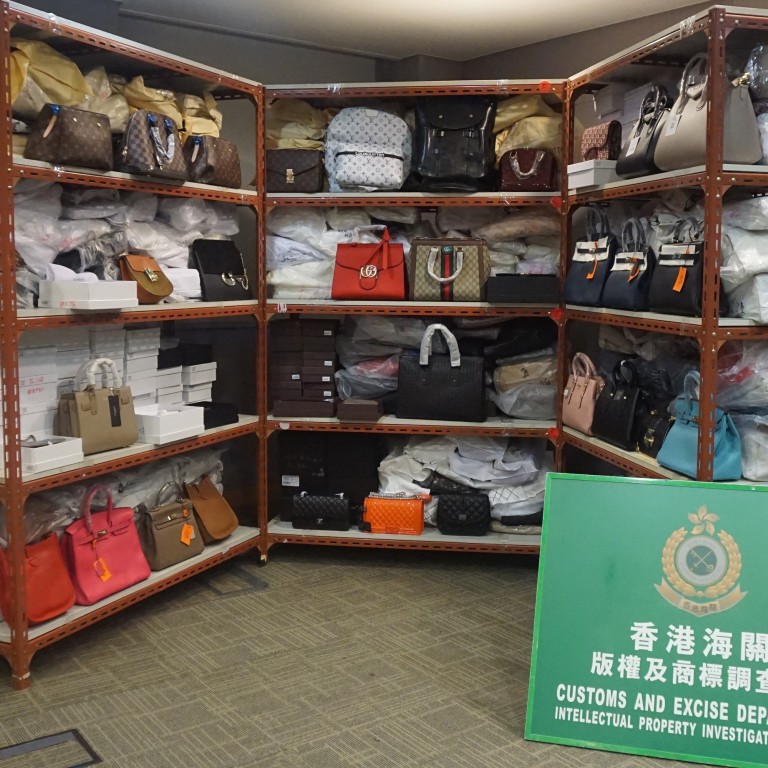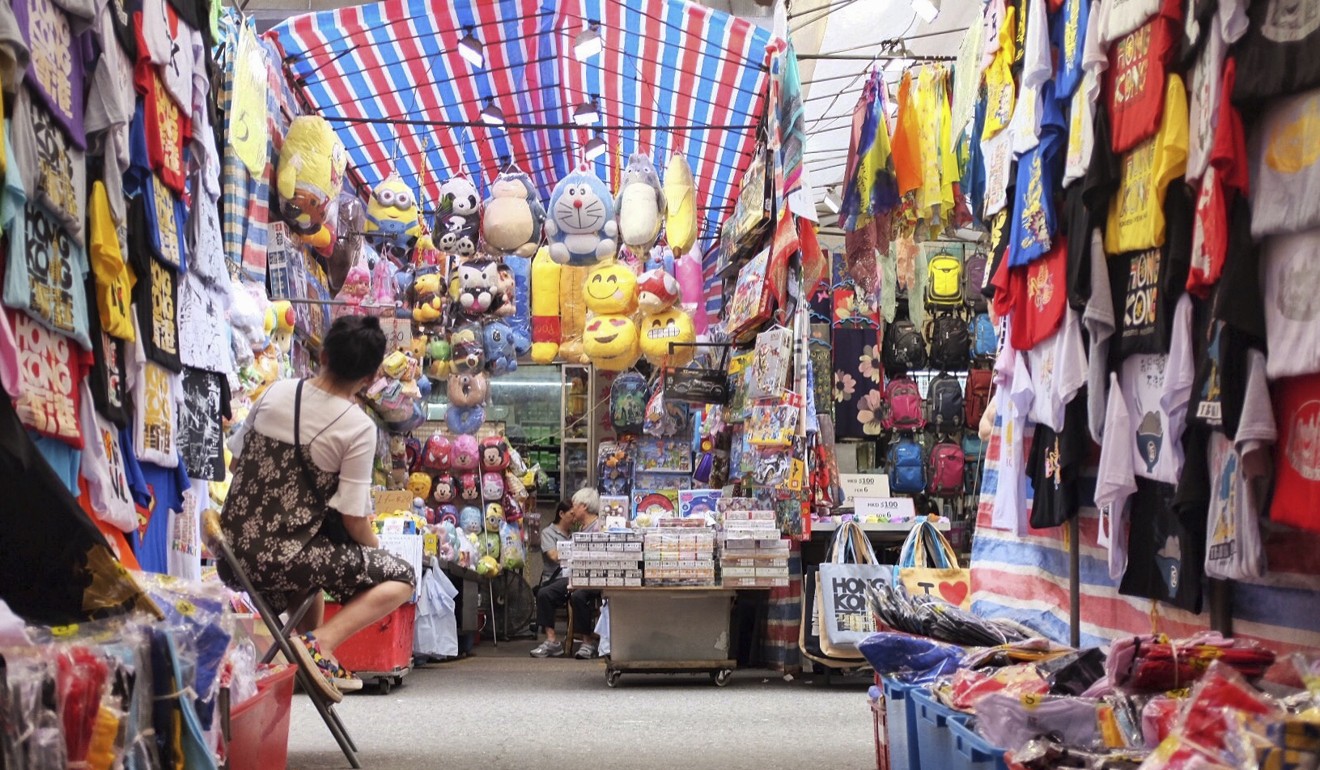
Counterfeit operation busted at Hong Kong’s Ladies’ Market, with HK$3 million worth of fake handbags, wallets and scarves seized
- About 5,000 products confiscated from flats used as store rooms
- Six suspects – three men and three women – held
Hong Kong Customs broke up a counterfeiting operation that targeted tourists at the city’s popular Ladies’ Market on Wednesday, with the arrest of six people and seizure of HK$3 million (US$380,000) worth of fake products.
The syndicate had sold fake brand-name goods at five stalls on Tung Choi Street, Mong Kok, for several months, according to divisional commander Peggy Tam Pui-ying of Customs’ intellectual property general investigation bureau.
During the operation, code-named First Clap, officers raided the five stalls and two nearby flats used as storage centres. They seized about 5,000 counterfeit products including handbags, wallets and scarves from the flats, and from three metal boxes used as mobile storage facilities and left in nearby alleys.
They began investigating the syndicate after receiving intelligence several months ago. Some went undercover to gather evidence.

The six suspects – three men and three women – included two alleged local ringleaders of the syndicate, according to the Customs and Excise Department.
The fakes were sold for from HK$300 to HK$4,000 each. The price was between 10 and 20 per cent of the cost of genuine products
Noting the group was highly organised, Tam said the syndicate only sold to foreign tourists and its touts did not approach locals or mainland Chinese tourists.
“In order to evade customs detection, no counterfeit goods were on display in the hawker stalls,” she said.
Touts used computer tablets to show targeted customers photos of counterfeit products. After the prices and the types of product were confirmed with the buyer, the fakes were brought to the stall from the store rooms.
Tam said each member of the syndicate had a specific task such as touting for business, delivering goods and taking payment.
“The fakes were sold for from HK$300 to HK$4,000 each. The price was between 10 and 20 per cent of the cost of genuine products,” she said.
The maximum penalty for selling counterfeit goods or possessing them for sale is five years in jail and a HK$500,000 fine.

